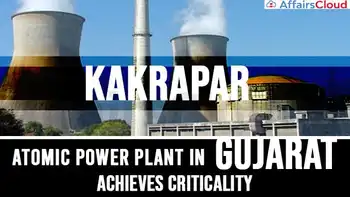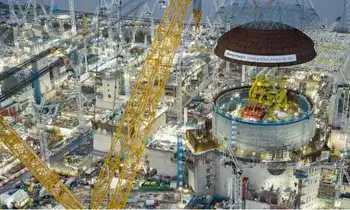Funds to shut nuclear plants fall short
By Associated Press
NFPA 70b Training - Electrical Maintenance
Our customized live online or in‑person group training can be delivered to your staff at your location.

- Live Online
- 12 hours Instructor-led
- Group Training Available
The shortfalls are caused not by fluctuating appetites for nuclear power but by the stock market and other investments, which have suffered huge losses over the past year and devastated the plants' savings, and by the soaring costs of decommissioning.
At 19 nuclear plants, owners have won approval to idle reactors for as long as 60 years, presumably enough time to allow investments to recover and eventually pay for dismantling the plants and removing radioactive material.
But mothballing nuclear reactors or shutting them down inadequately presents the most severe of risks. Radioactive waste could leak from abandoned plants into ground water or released into the air, and spent nuclear fuel rods could be stolen by terrorists.
During the past two years, estimates of dismantling costs have soared by more than $4.6 billion because rising energy and labor costs, while the investment funds that are supposed to pay for shutting plants down have lost $4.4 billion in the battered stock market.
The power companies have been hammered by the same declining market returns as colleges, companies and private investors. Industry critics say reactor owners weren't saving enough even before the financial collapse, and that federal regulators have not held the industry to a high enough standard.
Federal regulators are releasing a report that will describe shortfalls at 30 of the nation's 104 nuclear plants and ask operators for details about how they plan to resolve the problem.
The amount of money set aside for dismantling the plants has decreased at nearly four of every five reactors, according to an AP analysis of financial records provided every other year to the Nuclear Regulatory Commission. The government could force plant operators to set aside more money.
Plant owners say they have several ways to close the gap. In addition to idling the plants, the government can simply extend licenses to operate them. And investments could recover in the years to come. Industry officials say a 6 percent annual rate of return is a reasonable long-term goal.
Most nuclear plants will be operating for several more decades and will be able to recoup their fund losses, said Steve Kerekes, a spokesman for the Nuclear Energy Institute, a trade group.
Nuclear power critics say those plans are not enough.
"No one at the NRC wants to acknowledge what is absolutely obvious to us, that the funds are inadequate and that the industry has bare assets," said Arnold Gundersen, a retired nuclear engineer and decommissioning expert.
Those critics say the industry is making assumptions about their investments that do not account for another market collapse, political obstacles to getting the licenses renewed and unforeseen safety problems that could make nuclear power less palatable.
British officials reported on a 2007 leak in a cooling tank at the decommissioned Sizewell-A nuclear plant. If the leak had not been promptly discovered, officials said, nuclear fuel rods could have caught fire and sent airborne radioactive waste along the English coast, harming plant operators or the public.
The average cost of dismantling a nuclear reactor is now estimated now at $450 million. The average plant owner has about $300 million saved up for the job. Typically, the money is raised through a small surcharge on electric rates.
NRC records show utilities are trying to close the gaps:
• Owners at 19 plants have won approval to mothball reactors for as long as 60 years. A method called Safestor has been approved for reactors including the three Palo Verde units in the Arizona desert and the Three Mile Island 1 reactor near Harrisburg, Pennsylvania.
Under this method, radioactive fuel is removed from the reactor and the spent fuel storage pool and is stored in dry casks on plant property. Plant systems are drained of water, and the remaining radioactivity in the plant is left to decay until the facility is dismantled.
But some analysts worry the utility companies that own nuclear plants might not even exist in six decades.
"Our concern is that they'll just walk away from it," said Jim Riccio, a Greenpeace nuclear policy analyst. "It's like a sitting time bomb. The notion that you can just walk away from these sites and everything will be hunky-dory is just not true."
• The operators of 54 nuclear plants, or more than half in the U.S., have already received 20-year license extensions. Sixteen more are being reviewed, and the commission expects to receive 21 more applications in the next several years. To date, the NRC hasn't turned down any license extensions.
While companies ask for extensions for other reasons — primarily to keep producing power and making money — some companies have explicitly told shareholders they will use license extensions to meet their decommissioning obligations.
• Some plants are calculating growth projections for their investments with an annual return of 6 percent. While that is roughly what leading market indexes make over decades, the NRC found plant owners lost an average of 13 percent over the past two years.
In Texas, state rules govern utilities' investments, said Ashley Monts, a spokeswoman for Luminant Corp., which owns two nuclear plants near Glen Rose, Texas. Five years before a plant is set to close, she said, Luminant is required to have 60 percent of the cost available. Two and a half years out, the gap must be completely closed.
Luminant has about $385 million set aside to close its two plants in 2030 and 2033. Two years ago, that figure was $439 million. The cost of decommissioning the reactors is $824 million, almost $90 million than was estimated before.
• Plant operators appear to benefit from NRC rules that don't require them to set aside money to store old nuclear fuel, demolish buildings, or return the plant sites to pristine states. Although some states require a full site restoration, the federal government does not.
The Callaway Unit 1 reactor near Fulton, Missouri, reported in March that meeting the NRC savings target for decommissioning would leave it far short of the real cost of cleaning up the site.
It began with a story similar to those told by other plants: The cost to meet the minimum federal requirement for decommissioning rose from $358 million to $406 million in two years. Its savings to pay for it dwindled from $268 million to $236 million.
But a detailed study of the cost of decommissioning Callaway showed something far worse: The federal savings target was about $288 million less than what it would actually cost for a full dismantling, cleanup and safe storage of spent nuclear waste.
The waste disposal problem has become especially acute since the federal government scrapped plans to store nuclear waste at a secure facility in Yucca Mountain, Nevada.
Instead, radioactive fuel rods are now stored in large concrete and steel canisters on plant grounds that are guarded around the clock and tested often for leaks.
The Vermont Yankee plant, in southeastern Vermont along the banks of the Connecticut River, was hailed as the future of power production for New England when it opened in 1972. Its license is set to expire in 2012, and its decommissioning fund has less than half the money expected to be needed.
As recently as December 2007, the fund held $416 million. Now it stands at about $384 million — a rebound from where it stood a few months ago but not even close to the estimated $932 million it will eventually cost to dismantle the plant.
Entergy Corp. is seeking a 20-year license extension for Vermont Yankee, and is hoping to have enough money in the fund to decommission the plant in the 2030s. Jay Thayer, the plant's vice president for operations, said that if the decommissioning fund continues to perform poorly, the company may ask for permission to idle the plant for as long as 60 years under the Safestor program. That would put off the dismantling until 2092.











